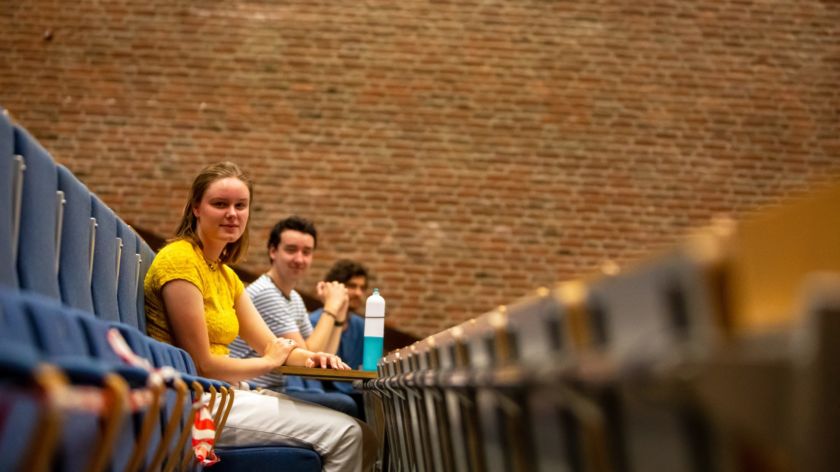What the university is doing for better air in lecture halls
-
 Photo: Dick van Aalst
Photo: Dick van Aalst
Not everyone is enthusiastic about spending one and a half hours with 75 other students in a lecture hall again. Is that even safe with all the aerosols flying around? And what does the university do in order to guarantee fresh air? ‘We have been using the Rolls-Royce of air filters for years.’
Who really did care about air quality and ventilation before Corona? A few, maybe. But after living in the age of Corona for one and a half years, that has changed. Three lecturers have recently talked about their disinterest in coming back to campus for lectures as of now. But the aerosols flying around a lecture hall can’t be that dangerous, can they?
Indeed, the university is receiving questions by concerned employees over the ventilation in its buildings, confirms Mark Groffen from the Campus & Facilities department. And the RIVM confirms as well that the risk of a corona infection is, after all, higher in poorly ventilated buildings.
‘Once the CO2-concentration exceeds a specific value, the installation begins to pump more fresh air into the lecture hall’
But at least when it comes to the ventilation, Groffen can ease the concerns of the employees. ‘We have good air conditioning. We are using the Rolls-Royce of filters and also replace them on time. We meet the requirements of the building regulations.’ Additionally, ventilation systems are switched on two hours before and switched off two hours after use.
More fresh air
The big lecture halls have always been equipped with CO2-meters. The amount of carbon dioxide in the air is a good measure for air quality, explains Groffen. ‘The more people are in a room and the worse the ventilation, the higher the concentration of CO2. Once the concentration exceeds a specific value, the installation begins to pump more fresh air into the hall.’ The air exchange in the lecture halls is therefore, as Groffen stresses, guaranteed to be in order.

That doesn’t mean that the university hasn’t taken any measures to improve the air quality in buildings throughout the last year – keeping an eye on the fight against the corona virus. So, for example, the large systems taking care of the air circulation have been replaced. They filter the air in order to pump it back into the same room, instead of pumping fresh air from outside inside. This meant major adjustments for the University Library and the investment in a new system that pumps fresh air from the outside into the building.
Thick sweater
There are also (part of) buildings on campus that are not (entirely) equipped with mechanical ventilation systems, such as the Thomas van Aquinostraat 1 and the Huize Heyendael. There, CO2-meters on which employees can monitor whether ventilation is adequate or not were installed this summer. The rule of thumb is consequentially to work with an open window.
That’s not an issue with the current temperatures, but how is this going to work during the winter? Groffen: ‘We have to be realistic here. If the rules don’t change, the people working there have to put on a thick sweater.’ Possible other solutions could be that employees would start working from home again or temporarily move to a new room.
The CO2-meters should thereby especially remind the building users’ of their own responsibility. ‘Ventilation has always been important, but now there is an additional focus on it. With a meter like this, we’re reminding people: just open that window.’



